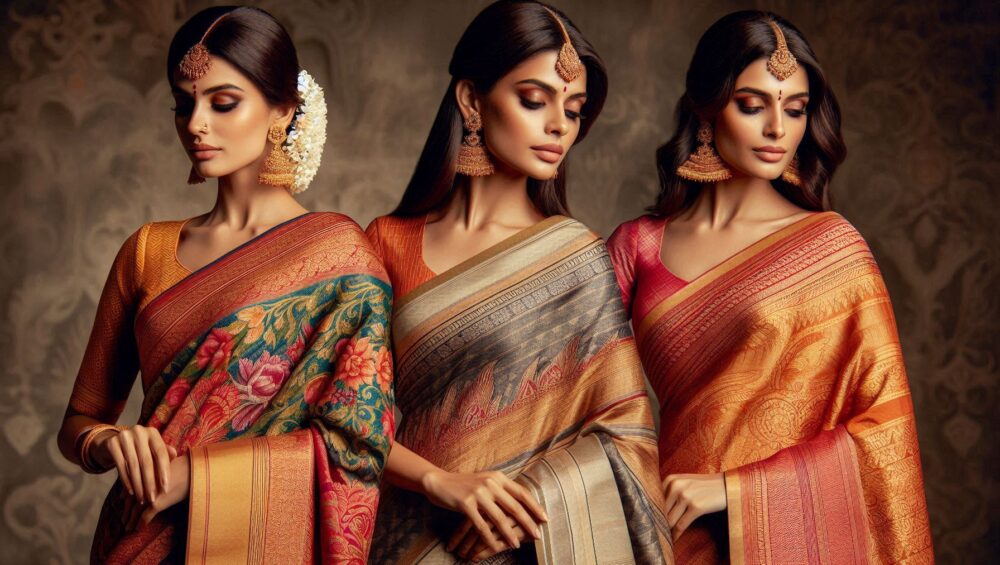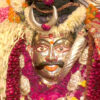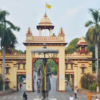Banarasi sarees being one of the historical and artistic products of India, reflects the rich culture of this country. From Varanasi (Banaras), these sarees are noted for their fabric made of silk, finer work, and a rich touch of zari work. It is therefore important to understand the various classifications of Banarasi sarees by fabric, design, etc. Whether you are an expert when it comes to sarees, or if it is something that you have very little knowledge about, this blog will give you a broad look into the world of Banarasi sarees.
Table of Contents
Different Types of Banarasi Sarees

Types of Banarasi Sarees Based on Fabric
Banarasi sarees come in various fabrics, each offering a distinct texture and appeal. Here are the primary types based on fabric:
1. Pure Silk (Katan)
Description: Katan silk is a high-quality silk thread used to weave pure silk sarees. These sarees are known for their smooth texture and lustrous finish.
Features:
- Smooth and durable fabric
- Rich in texture
- Often adorned with intricate zari work
Occasions: Ideal for weddings, festive occasions, and grand celebrations.
2. Organza (Kora) with Zari and Silk
Description: Organza is a sheer, lightweight fabric that is often combined with silk and embellished with zari work. These sarees are known for their delicate and elegant appearance.
Features:
- Sheer and crisp texture
- Delicate and lightweight
- Embellished with fine zari work
Occasions: Perfect for formal events, cocktail parties, and traditional functions.
3. Georgette
Description: Georgette Banarasi sarees are made from georgette fabric, which is lightweight and has a slightly crinkled texture. These sarees combine traditional designs with a modern touch.
Features:
- Lightweight and flowy
- Slightly crinkled texture
- Often features contemporary patterns
Occasions: Suitable for casual gatherings, office wear, and semi-formal events.
4. Shattir
Description: Shattir is a blended fabric used to create more affordable Banarasi sarees without compromising on elegance and design.
Features:
- Blend of various threads
- Cost-effective yet elegant
- Often features simple yet attractive designs
Occasions: Great for everyday wear, small functions, and festive occasions.
Types of Banarasi Sarees Based on Design
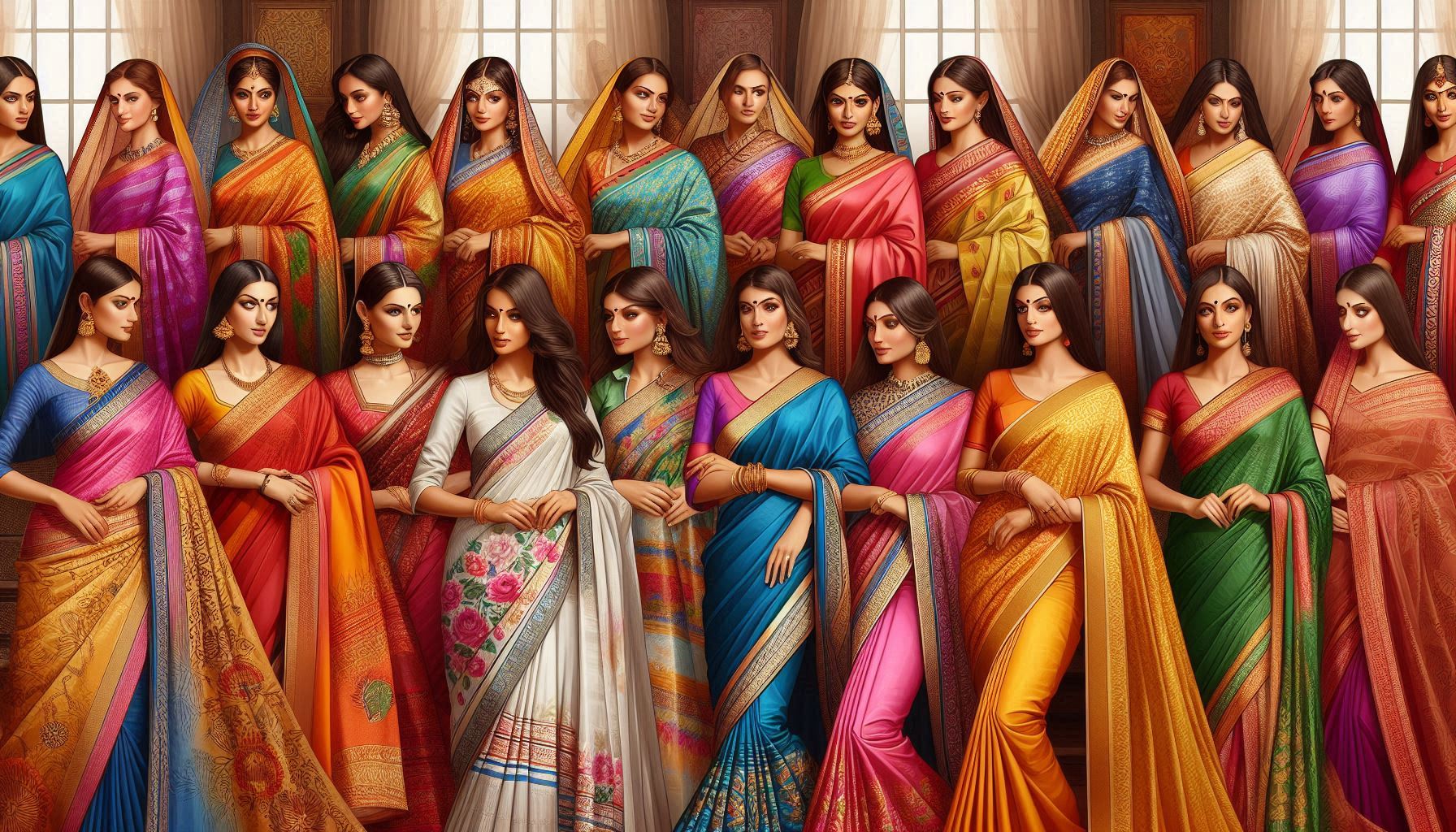
The design of a Banarasi saree plays a crucial role in its appeal and uniqueness. Here are the prominent types based on design:
1. Zari Work
Description: Zari work involves the use of metallic threads, usually gold or silver, to create intricate patterns and motifs on the saree.
Features:
- Metallic threads woven into the fabric
- Rich and opulent designs
- Commonly features floral and paisley motifs
Occasions: Ideal for weddings, grand celebrations, and festive occasions.
2. Brocade
Description: Brocade Banarasi sarees are known for their raised patterns that are woven into the fabric, often using gold and silver threads.
Features:
- Raised, intricate patterns
- Use of gold and silver threads
- Luxurious and ornate appearance
Occasions: Perfect for bridal wear, special events, and traditional ceremonies.
3. Butidar
Description: Butidar sarees feature small, intricate motifs woven throughout the fabric, often in contrasting colors or metallic threads.
Features:
- Small, repeated motifs
- Use of contrasting colors or zari threads
- Elegant and detailed designs
Occasions: Suitable for weddings, festivals, and formal events.
4. Tanchoi
Description: Tanchoi sarees are known for their elaborate patterns woven with colorful silk threads, often depicting floral and paisley designs.
Features:
- Use of colorful silk threads
- Detailed and elaborate patterns
- Often features floral and paisley designs
Occasions: Ideal for weddings, traditional functions, and special occasions.
5. Jangla
Description: Jangla sarees are characterized by their intricate, sprawling patterns that cover the entire saree, often featuring floral and foliate motifs woven with zari threads.
Features:
- Intricate, all-over patterns
- Use of zari threads
- Rich and elaborate designs
Occasions: Perfect for grand events, weddings, and festive celebrations.
Other Unique Aspects of Banarasi Sarees
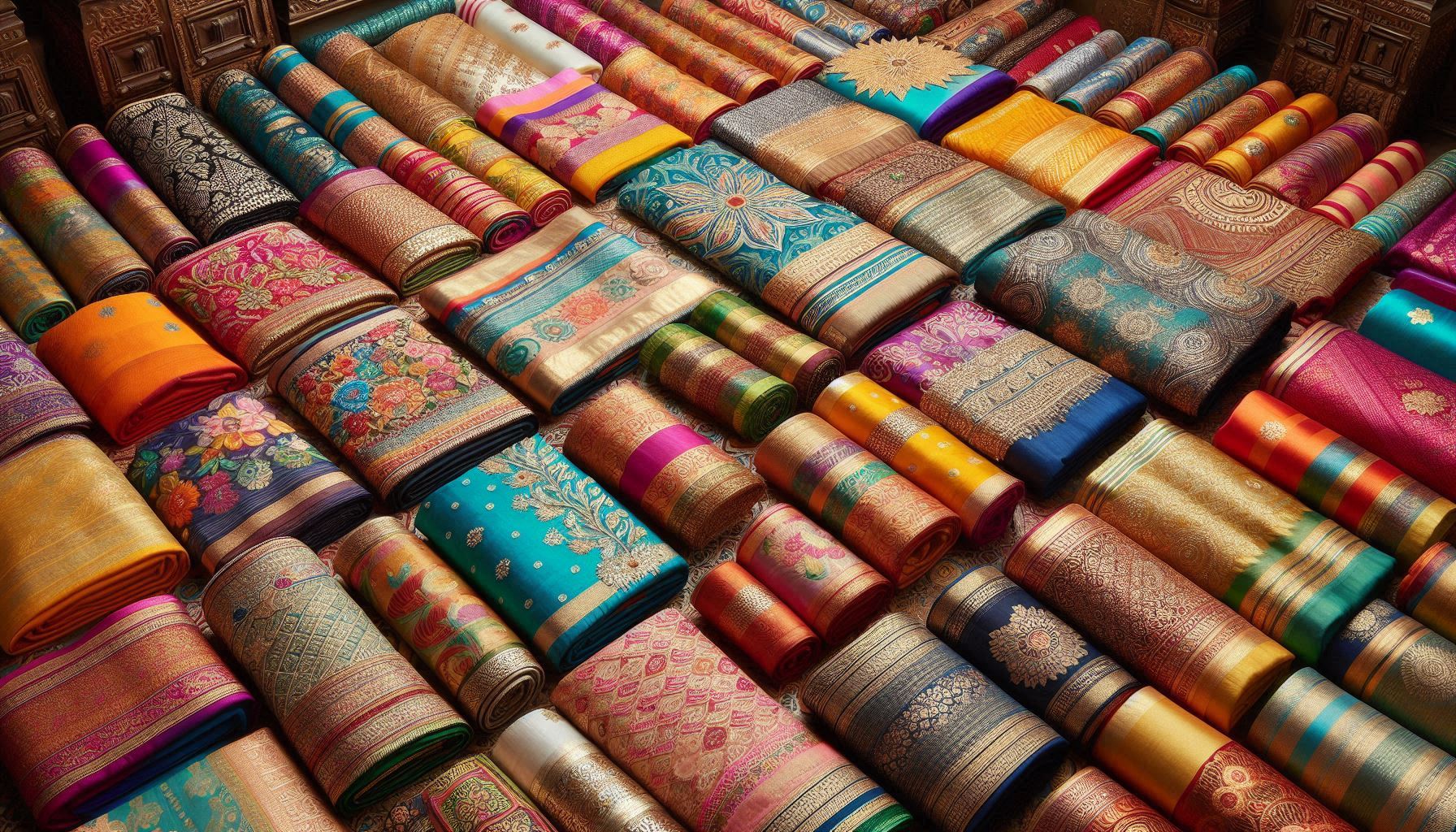
1. Weaving Techniques
The traditional weaving techniques used in Banarasi sarees involve meticulous handcrafting on looms. Skilled artisans work for weeks or even months to create a single saree, ensuring the highest quality and detail.
2. Cultural Significance
Banarasi sarees hold a special place in Indian culture and are often passed down through generations as heirlooms. They are a symbol of heritage, tradition, and timeless beauty.
3. Geographical Indication (GI) Tag
Banarasi sarees have received a Geographical Indication (GI) tag, ensuring that only sarees made in Varanasi and its adjacent areas can be labeled as “Banarasi sarees.” This tag helps preserve the authenticity and heritage of the craft.
Conclusion
Thus, Banarasi silk sarees are the real identity of the country which reflects its glorious lineage and artistry. While some of the fabrics used include katan silk, organza, the work of zari, brocade and butidar are the exquisite designs that narrate a rich culture of Banarasi sarees. Through this further classification of Banarasi sarees in terms of fabric, design and other features one may get to know more and appreciate these sarees better. It may sound cliché but there is no doubt that the Banarasi saree is still one of the most timeless pieces of art that demonstrate beauty, sophistication and pride in one’s heritage whether one is an advocate for luxurious fabrics or an aficionado of conventional fashion.
FAQs Related To Types of Banarasi Silk Sarees
1. What makes Banarasi sarees unique?
Banarasi sarees are unique due to their intricate designs, luxurious fabrics, and the meticulous hand-weaving process that goes into creating each saree.
2. How can I identify an authentic Banarasi saree?
Authentic Banarasi sarees often come with a GI tag. Look for intricate zari work, fine craftsmanship, and a silk mark label indicating pure silk.
3. What occasions are Banarasi sarees suitable for?
Banarasi sarees are suitable for weddings, festive occasions, formal events, and traditional functions. They are a symbol of elegance and grace.
4. How should I care for my Banarasi saree?
Banarasi sarees should be dry-cleaned and stored in a cool, dry place. Avoid folding along the same crease repeatedly to prevent damage to the fabric and embroidery.
5. What is zari work in Banarasi sarees?
Zari work involves weaving metallic threads, usually gold or silver, into the fabric to create intricate patterns and motifs, adding a touch of opulence to the saree.
6. What are the different fabrics used in Banarasi sarees?
Banarasi sarees are made from various fabrics, including pure silk (katan), organza (kora) with zari and silk, georgette, and shattir.
7. How long does it take to weave a Banarasi saree?
Depending on the complexity of the design and the type of saree, it can take anywhere from 15 days to 6 months to weave a single Banarasi saree.
8. Are there eco-friendly Banarasi sarees?
Yes, some weavers use eco-friendly dyeing techniques and natural dyes to create vibrant colors without harming the environment.
9. What are the popular designs in Banarasi sarees?
Popular designs include zari work, brocade, butidar, tanchoi, and jangla, each offering unique patterns and motifs.
10. Can Banarasi sarees be worn casually?
While Banarasi sarees are typically reserved for formal and festive occasions, lighter variants like georgette Banarasi sarees can be worn casually or for semi-formal events.

